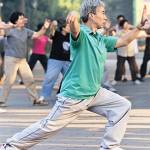Anaerobic exercise relies mainly on the anaerobic energy-generating process and causes lactate to form in the muscles. This process occurs when the supply of oxygen cannot support the energy demands in high-intensity activities (e.g., sprints or heavy lifts).
The American College of Sports Medicine provides lists of activities that are generally classified as aerobic and anaerobic on the basis of population data. However, like medications, one must consider patient-specific attributes, such as strength, cardiovascular fitness and metabolism, to properly describe energy expenditures for specific activities in a given patient.
Prescribing Exercise
Respecting the potency of pharmacological interventions comes naturally to healthcare providers. When prescribing medications, physicians must inform their patients of the appropriate dose, frequency and duration of medication, as well as potential side effects, alternative therapies and adverse events. This information ensures informed consent, enhances medication adherence and helps avoid or detect early adverse health effects associated with the medication.
With physical activity and exercise, the same reasoning holds true. Exercises are prescribed by informing the patient of the appropriate duration, intensity and frequency, as well as describing potential side effects and adverse events. Intensity and frequency are essentially the activity dose, and intensity refers to the desired level of energy expenditure during performance of the activity.
Data indicate that exercise and physical activity are potent interventions for managing RA symptoms and its consequences, plausibly leading to adverse health effects when poorly prescribed.11 Despite the heterogeneity of exercise interventions, the rate of adverse effects is low, and drop-out rates from intervention studies are typically lower than from drug trials.12-14
Pain
Pain is a common symptom in RA, with as many as 68–88% of patients rating pain as one of their top three priorities.15 The metabolic benefits of exercise, through down-regulating pro-inflammatory cytokines that attribute to pain, appear to outweigh the momentary increase in pain due to biomechanical stress.16 Many exercise studies of land-based aerobic and strength interventions reveal decreases in self-reported pain once tissue adapts. Improvements in self-perceived pain from these forms of exercise yield modest benefits (effect sizes of -0.53 [-1.09, 0.04]).5
As tissue adaptation occurs, activities or joint movements previously hindered by pain become possible. However, if the adaptation happens too quickly or at too great a mechanical load, pain may increase. Increased pain associated with inappropriately dosed exercise may lead to avoidance behaviors, adversely resulting in a decrease in total physical activity levels or lowering adherence to an exercise regimen.17 If the aim of an exercise intervention is to increase bone mass, lean muscle mass or increase cardiorespiratory fitness (CRF), patients need to understand how and when to modify exercise and what is acceptable as exercise-related discomfort vs. overstressing joints and soft tissue.18 Patient education can enhance adherence to exercise interventions and ensure proper modes of exercise, frequency, intensity and duration occur, as well as increase understanding of what is acceptable (i.e., typical) exercise-induced discomfort.19
RA & Cardiovascular Health
Although cardiovascular disease (CVD) events occur more frequently in patients with RA than in their healthy peers (3.43 and 0.59 per 100 person-years, respectively), traditional risk factors for CVD events seem to only partially explain this phenomenon, and specific rheumatic cytokines may explain the differences in risk.20-22 Recently, CVD-associated fatalities have declined, and biologic therapies are being hailed as the reason for this new trend, because they appear to attenuate inflammatory markers.23,24


